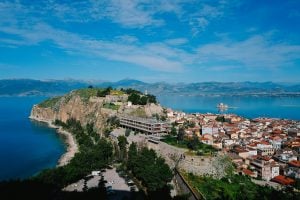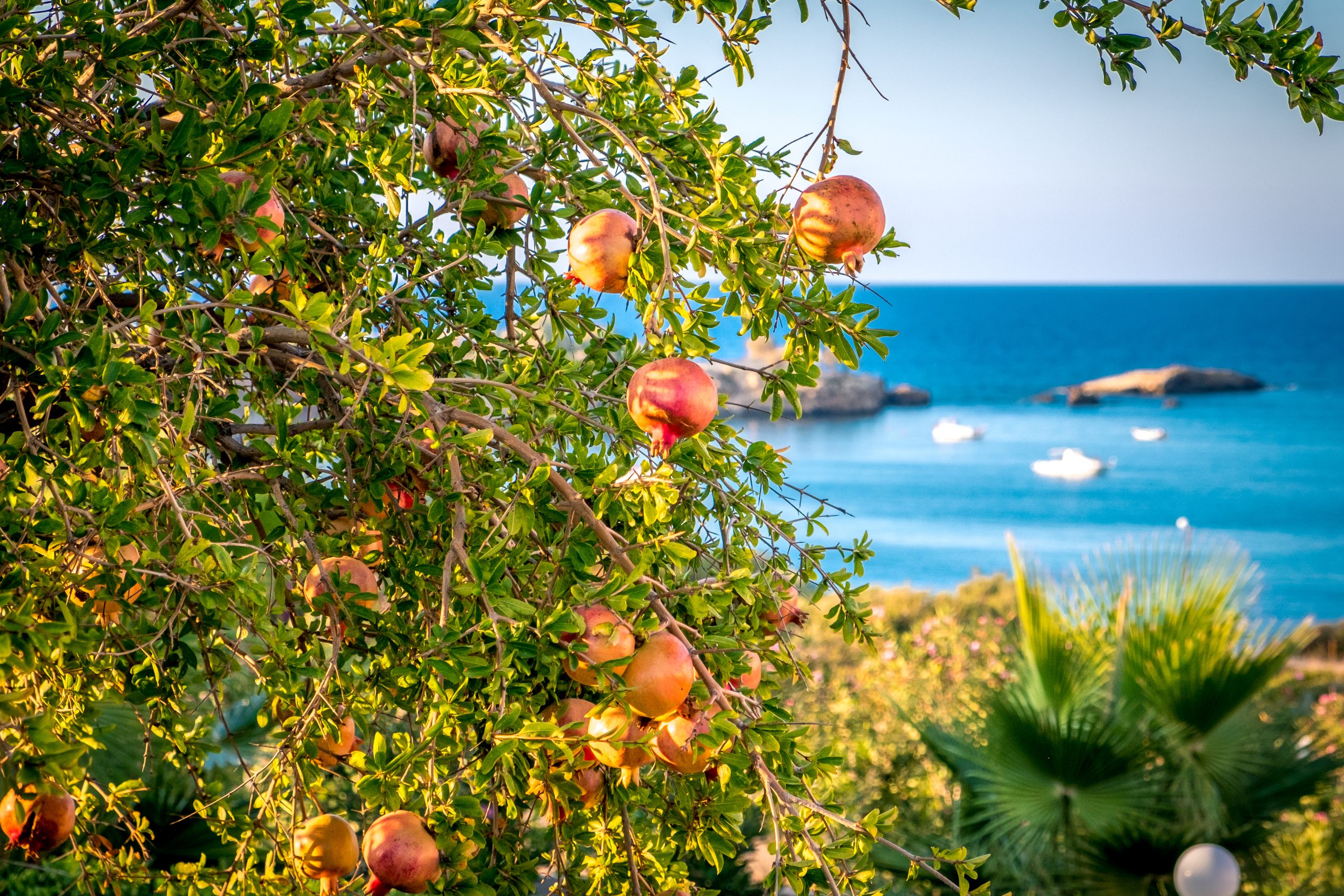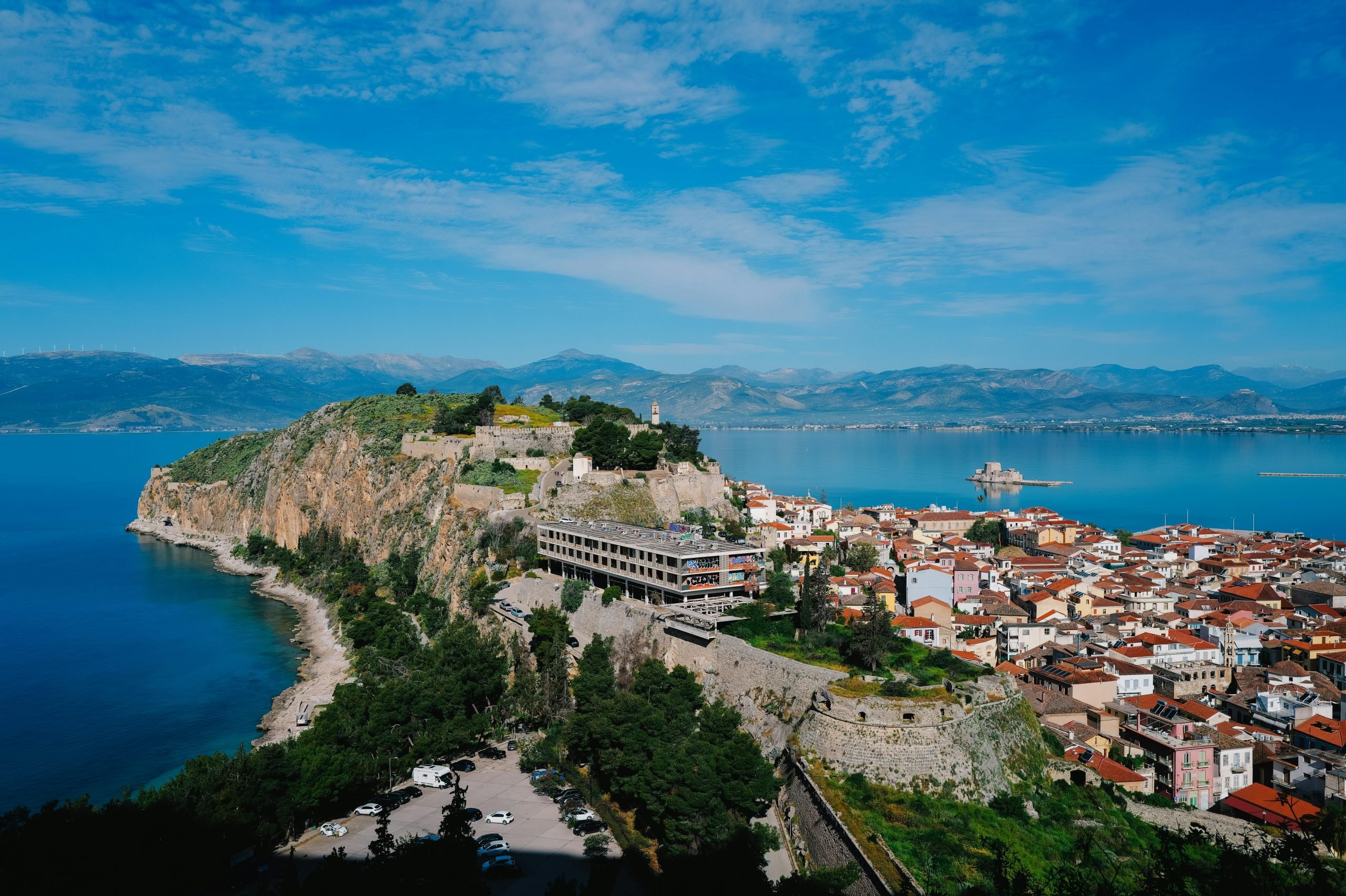Where Do Greek towns get their names? Why does it feel like every town I pass in Greece starts with “Agios”? Why is Mykonos called Mykonos? And why is Santorini called Santorini? In ancient Greece, did Greek islands have the same name as they do today? All your questions about the names of islands and towns in Greece are answered in this article.

Where Does Our Data Come From?
The data shared in this article come from the Hellenic Statistical Authority, as well as data analysis by data scientist Jaime Garcia Chaparra. 12,904 settlements Greece are included in the calculations.
Why Does it Feel Like Every Town is Named “Agios Georgios”?
You’re not crazy, Greece really does reuse town names. Out of almost 13,000 towns and villages in Greece, about 4,000 are a repeated name. So, about 40% of location names are used more than once in Greece. The 50 most common town names make up almost one in ten towns in Greece.
Some of the most common names of towns and villages in Greece are Agios Georgios, Agios Nikolaos, Agios Dimitrios, Neochori, and Kallithea.

Why Are There So Many “Agios” Towns in Greece?
“Agios” in Greece means “Saint”. In Greece, 670 places start with this word, because Greece has many Orthodox Christians. In Mykonos, almost 15% of towns are named after a saint.
Are Some Town Names Unique to the Greek Islands?
Yes, some Greek town names are specific to certain islands because of naming traditions. For example, on the island of Kefalonia in the Ionian Sea, almost half of the island’s towns end in the letters “a-t-a”. This ending for town names is almost never found in other areas of Greece.
Similarly, in Crete, a large group of towns in west and central Crete end in “es”. Kalyves, Fres, and Kerames are just a few examples. Towns ending in -ovo are mostly found in the Epirus region in Northwestern Greece. For example, Metsovo, Kapesovo, and Tsepelovo fall into this category.

Other Fun Facts About Greek Towns
In the Greek language, towns, like any other nouns, can be either masculine, feminine, or neutral. Some towns are even plural. The largest percentage of towns in Greece are given a feminine gender.
The longest one-word name for a town in Greece is Σταματογιανναίικα (Stamatogiannaiíka) in Aetolia. If you count, that’s 17 letters.
“Old” and “New” Towns in Greece
If you drive through Greece, you will probably come across “old” or “new” versions of the same town. “Paleo” means old and “neo” means new. The largest number of these towns are in Macedonia and Thrace. There are also several in the Peloponnese.
For example, Epidavros in the Peloponnese has both an “ancient Epidavros” and a “new Epidavros” town. To add to this, the famous theater of Epidavros isn’t located in the ancient town, but in a separate location. Be sure to set your navigation to the correct destination, or you could get lost!

Why is it Called Mykonos?
The name of this famous Greek island comes from the young first ruler of the island, whose name was Mykonos. He was said to be a descendant of Anius, the mythical king of Delos. Delos island is located across from Mykonos and is a popular day trip from Mykonos.

Why is it Called Corfu?
Korkyra or Kerkyra was the name in the Antiquity. In the Medieval and Byzantine era (since the 7th century), the island name was changed to Korypho. The name “Koryphó” (Κορυφώ) “peak”, refers to the peaks of the fortified Byzantine acropolis (today the Old Fortress).
This same name is found in all texts from Medieval and Byzantine times. Luitprand, Bishop of norther Italy in Cremona once returned to Italy from his embassy to Constantinople and he stopped at Corfu, which he called by the name Coriphvs (=Κορυφούς=Κορυφώ=English Corfu). This suggests that the name was already in use in the year 968 and characterized the whole island. The same name in the West prevailed as “Corfu” and it spread internationally.

Why is it Called Santorini?
The name of this famous Greek island comes from the Frankish Crusaders who stopped on the island for supplies, likely in the 13th century. Reports tell that they stopped near the church of Saint Irene, and the name of the island followed. As you can see in the image below, not much of Saint Irene’s Church is still standing.
On some maps, Santorini will go by the name “Thira”, which translates to “door” or “gate”. The name “Thira” comes from the ancient spartan, Theras, who was the first person to bring settlers to the island.

Why is it Called Rhodes?
Since ancient times, the island of Rhodes has been associated with the rose flower. The connection with the rose comes from the ancient Greek god Helios, who considered roses to be sacred. Although it’s not obvious when you make a visit to Rhodes nowadays, the island used to have a unique connection to Helios. The Colossus of Rhodes, one of the wonders of the ancient world, depicted the sun god. This is why coins from Rhodes on one side had the head of Helios, and on the other side, a rose.

Why is it Called Athens?
The name of Athens is rooted in mythology. As the story goes, the Greek gods wanted to name the city after either Athena or Poseidon. As a gift offering, Athena offered an olive tree, which is supposedly still standing on the Acropolis hill. The olive tree was thought to be useful because it offers oxygen, shadow, food, olive oil, and wood.
In contrast, Poseidon offered a saltwater lake, which naturally was not as useful to the inhabitants, so Athena won the city. As you walk up the Acropolis Hill and get close to the Propylaea gateway, you will find the small temple of Athena Nike.



































